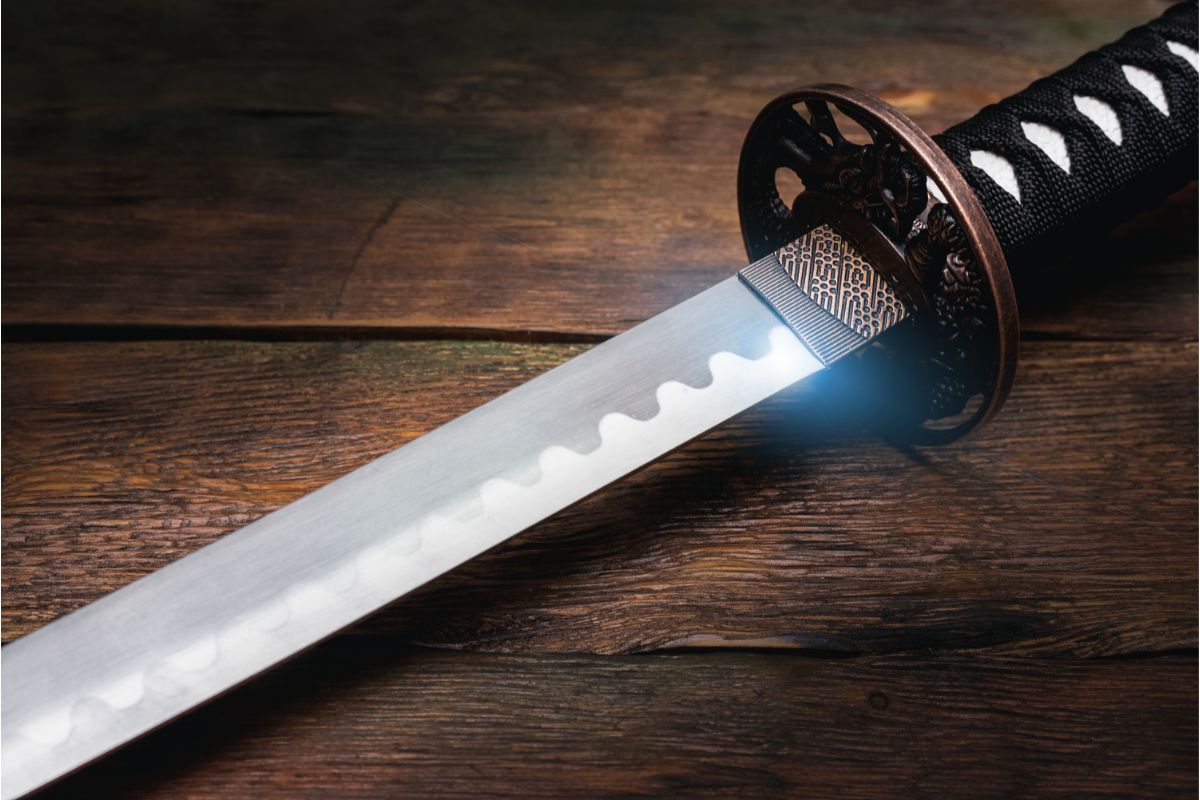Laevateinn is the great sword of Loki. The sword of Loki is the only weapon able to slay the mythical rooster Vidofnir, who lives at the top of the World Tree and summons the dawning day.
As with so many things in Norse mythology, the origin of Laevateinn is heavily disputed among scholars. Even the type of weapon Laevateinn is depends on the translation.
Some translators call it a wand or a dart, others a twig. The most agreed-upon type of weapon is a sword.
What does Laevateinn mean?
Laevateinn means “wounding wand” or “damage twig” in Old Norse. It also means “wand of destruction.”
It’s important to note that “wand” is considered a kenning or an Old Norse word with a symbolic meaning. This means that a sword could easily be called a wand, which many scholars believe is the case.
In the earliest translations of the poem Fjolsvinnsmol (Fafnismol), the sword of Loki was called Haevateinn. Around 1860 or 1861, Norwegian linguist Sophus Bugge proposed that the name be changed to Laevateinn to cement its meaning as “wand of destruction.” In his 1867 version of the Poetic Edda, Bugge changed to Laevateinn.
Other scholars followed suit since the name made sense as Laevateinn and the H was likely a made-in-error, to begin with. Haevateinn just didn’t make sense within the context of Laevateinn’s existence.
The root of Laevateinn is Lae, which is also the root of Loki’s nickname Laegjarn. Lae means “cunning,” “deceitful,” or “fraud.”
Why was Laevateinn created?
Like everything else Loki did, Laevateinn was created with a plan. Loki intended to kill the mythical rooster Vidofnir. He was convinced killing Vidofnir would give him the upper hand during Ragnarök.
Killing the rooster who called forth the dawning day seemed like a waste, but there was more to Vidofnir. From his perch in the highest branches of all the realms, Vidofnir could see the giants marching toward Asgard.
If the rooster were to warn Odin of the army coming his way, Odin would have enough time to rally the troops and thwart the giants.
What was the sword made out of?
Attestations of Laevateinn and its creation appear in the Eddic poem Fjolsvinnsmol. In the earliest translations of the poem, the sword of Loki was made from a twig snapped from the entrance of Hel’s realm in Niflheim. Later translations have Loki forging Laevateinn from runes present near the gates of Hel’s realm.
Many Norse mythology scholars believe Laevateinn is also the sword wielded by the fire giant Surtr during Ragnarök.
In Surtr’s hands, the sword of Loki burned with flames, making the already powerful weapon even more impressive. Like many magical weapons of the Norse gods, Laevateinn was a force to behold.

How powerful was Laevateinn?
Laevateinn was powerful enough to kill the mythical rooster Vidofnir. Killing a rooster doesn’t seem like a feat until you consider that this was the only weapon in existence that could slay Vidofnir. This means that even Thor and his hammer, Odin and his spear, and all the other weapons of the gods were unable to kill this magical rooster.
The sword of Loki was so powerful that it was stolen shortly after it was created. Laevateinn was locked away in a chest that lay near the giantess Sinmora, the consort of Surtr. Nine locks held the chest closed, and only feathers plucked from the tail of Vidofnir himself could open the locks.
If we’re to believe the theory that the sword of Loki is the same flaming sword carried by Surtr into Ragnarök, then the placement of the chest is significant. While Sinmora (also Sinmara) was Mimir’s wife, she was known to have a relationship with the fire giant Surtr.
In fact, Sinmora is the mother of all fire giants, as Surtr was the first fire giant in existence. If Sinmora had access to Loki’s sword, it’s easy to see how Surtr would have ended up with Laevateinn in his possession.
Did Loki have any other weapon?
Loki isn’t associated with a specific weapon like other Norse gods are. Aside from Laevateinn, Loki is most known for his giant net. At times, Loki also used other weapons, such as Odin’s spear.

